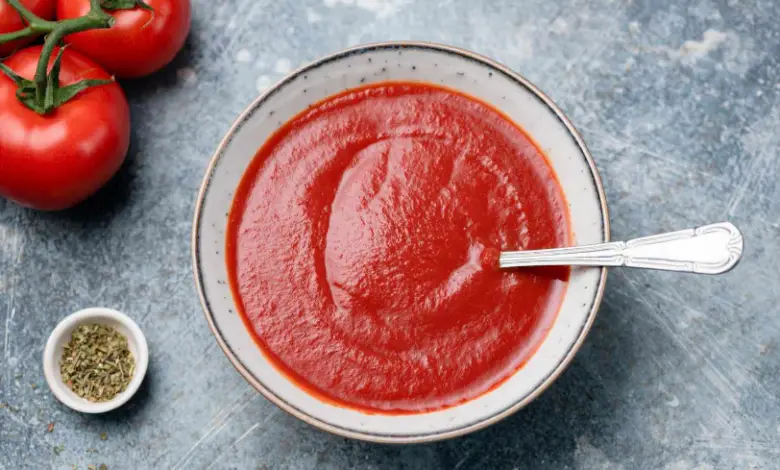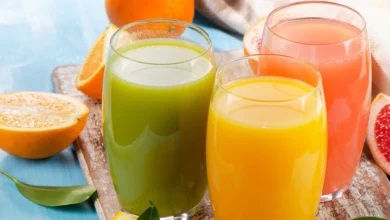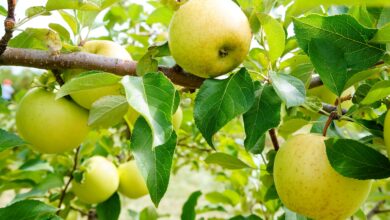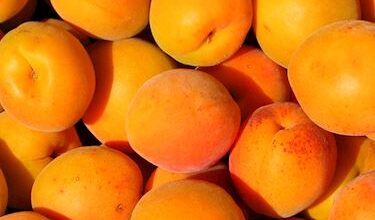Tomato Puree Vs Sauce: Analyzing The Key Differences

Tomatoes are a popular food that we use in many different kinds of meals. They can make foods like sandwiches, pasta, and stews taste better and look more colorful.
There are a lot of tomato products you can buy, and it’s not always clear what makes tomato puree different from tomato sauce. They might look similar, but they are used for different things in cooking. In this guide, we’ll look at these differences so you can choose the right one for your food.
Table of Contents
- What Are Tomato Puree and Sauce?
- Understanding Tomato Puree
- Getting to Know Tomato Sauce
- Main Differences Between Tomato Puree and Sauce
- 1. How They Feel and Look
- 2. What Goes Into Them
- 3. Different Tastes
- 4. What They Look Like
- 5. Health Benefits
- 6. How You Use Them
- 7. Storing Them
- How Should You Use Tomato Puree?
- How Should You Use Tomato Sauce?
- Choosing Between Tomato Puree and Sauce: Which is Better for You?
- Importance of Quality – Selecting the Best Products
- Finding the Perfect Consistency
- Classic Combos with Tomatoes
- Conclusion
What Are Tomato Puree and Sauce?
Let’s begin by explaining what tomato puree and sauce are.
Understanding Tomato Puree

Tomato puree is made from tomatoes that have been cooked for a short time. The tomatoes are then strained to take out the seeds and skins, and then they are mashed into a very smooth, thick paste. Tomato puree does not have chunks; it is very even and has a deep red color because it is mostly tomato. It’s used in cooking to give a strong tomato taste and a nice, thick texture without making the dish too watery.
Getting to Know Tomato Sauce

Tomato sauce is made by adding things like onions, garlic, herbs, and spices to tomato puree. These additional ingredients are often cooked in olive oil before being mixed with the puree. Tomato sauce is more watery than puree and has pieces of tomato and other vegetables, which makes it thicker and more flavorful. This sauce is perfect for mixing with pasta or for dishes like pizza, lasagna, or chicken parmesan because of its thinner, easy-to-pour consistency.
Main Differences Between Tomato Puree and Sauce
Now that we know what each is, let’s look at the main differences between the two:
1. How They Feel and Look
The texture and consistency of tomato puree and sauce are the first things you’ll notice that are different. Tomato puree is thick and smooth, like a paste. Tomato sauce, on the other hand, is thinner and more like a liquid. Because of how they feel, you would use them for different things when you cook.
2. What Goes Into Them
Tomato puree is just tomatoes that have been made into a paste. But tomato sauce has more than just tomatoes. It has extra ingredients like onions, garlic, herbs, and oil.
3. Different Tastes
Taste is a big difference. Tomato puree is all about the taste of tomatoes, because that’s its only ingredient. Tomato sauce has a more interesting taste because it has other things like herbs and spices in it.
4. What They Look Like
Tomato puree is very red because it has a lot of tomatoes in it. Tomato sauce might look a bit less bright, sometimes with a bit of an orange color, because it has other things like oil and vegetables. It also has visible pieces in it, while puree is completely smooth.
5. Health Benefits
Because tomato puree is just tomatoes, it has more of the good things found in tomatoes, like lycopene, vitamin C, and carotenoids. However, what’s in tomato sauce can change depending on the recipe, but generally, puree will have more tomato nutrients.
6. How You Use Them
Tomato puree is better for making foods thicker because it’s like a paste. Tomato sauce is thinner, so it pours easily and is nice as a topping. They each have their own uses in the kitchen.
7. Storing Them
If you keep them right, both can stay good for 12 to 18 months in a cupboard. Tomato puree might last a little bit longer because it has less water and more acid. But always check the dates on the packaging and make sure the jars are closed tight.
When you understand these differences, you can make better choices about whether to use puree or sauce for your meals.
How Should You Use Tomato Puree?
Tomato puree is great for:
- As a thickener – It can make soups, stews, chili, and other dishes thicker and richer without adding water.
- For smooth sauces – Use puree instead of sauce if you want your dish to be silky and smooth without chunks.
- To boost tomato taste – Tomato puree will make the tomato flavor stronger in dishes.
- In baking – Adding a little puree to cakes, muffins, quick breads, or scones can make them moister and more flavorful.
- To help browning – When you’re cooking meats, poultry, or vegetables, puree can help them get a nice browned look and keep them from sticking to the pan.
- As seasoning – Even though puree doesn’t have salt, it can make the flavors in your dishes richer. Just a spoonful can add zing to soups, stir-fries, roasted veggies, and more.
Tomato puree works best when you want to add tomato flavor and moisture in your cooking, without extra liquid.
How Should You Use Tomato Sauce?
The thinner, easy-to-pour texture of tomato sauce is perfect for:“`html
Tomato sauce is perfect for:
- Dressing up pasta: Tomato sauce is great for mixing with pasta, whether you’re tossing it with freshly cooked spaghetti or layering it in a lasagna.
- Used as a topping: It’s perfect for drizzling over various dishes like meatballs, sausage, or even seafood to add an extra burst of flavor.
- Essential for pizza: Tomato sauce and cheese are what make a pizza truly irresistible, turning it into a delicious meal.
- Adding flavor to sandwiches and wraps: Whether your sandwich is hot or cold, adding tomato sauce can bring a tasty twist and some moisture to the filling.
- Enriching soups: Stirring tomato sauce into soups like minestrone can add a bright color, a rich tomato taste, and interesting textures.
- Creating a foundation: Use the sauce as a starting point and cook it with herbs and spices to make a fantastic base for stews and curries.
- Preserving for later: You can make large amounts of sauce and keep it for later by canning or freezing.
Because tomato sauce is more fluid, it’s especially good when you want to incorporate a classic tomato taste in a form that’s easy to pour over food.
Choosing Between Tomato Puree and Sauce: Which is Better for You?
Let’s think about whether tomato puree or sauce is the best for your cooking:
- Thickening dishes: Puree is the way to go if you need to make your dish thicker or creamier.
- Saucing: Sauce is best for covering pasta or adding flavor to proteins.
- Simplicity: If you only want a pure tomato flavor, use the puree to let it stand out.
- Complex flavors: Sauce is great for adding a wider range of tastes to your dish.
- Textures: Think about what textures you already have in your meal and choose accordingly.
Adding more: For using as a condiment or final touch, sauces are your friend. - Maximizing flavor: Purees excel at bringing out a strong tomato taste.
Think about whether you want your dish to be smooth, rich, or full of flavor. Your recipe should help you decide. A chunky garden sauce works well in a marinara, while a puree is perfect for a smooth tomato bisque. Different foods might need different types of tomato products, so choose wisely.
Don’t hesitate to try new things! Sometimes, switching from a puree to sauce (or the other way around) could make a dish even better. Experiment with different amounts to find the perfect taste and texture. As you practice, you’ll get better at using tomato puree and sauce to enhance your cooking.
Importance of Quality – Selecting the Best Products
Whether you’re getting tomato puree or sauce, the quality of the ingredients matters a lot. For the best and healthiest choice:
- Prefer BPA-free packaging: Avoid products where chemicals might seep into the food.
- Go non-GMO: Choose options that are not genetically modified for a more natural ingredient.
- Opt for organic: This can help you steer clear of pesticides.
- Watch out for additives: Pick ones without extra sugar or with less salt.
- Choose jars or cartons: These are better than cans, which often have linings that contain BPA.
- Read the ingredient list: Fewer ingredients usually means a purer product.
- Trust in brands: Go for ones that are renowned for their high quality.
- Homegrown: If you’re making it yourself, use tomatoes that are in season for the best taste.
When you’re in the store, take a little time to look at the labels and pick the best purees or sauces. Your dishes are bound to taste even better as a result.
Finding the Perfect Consistency
Issues with the consistency of tomato puree vs sauce:
If it’s too runny:
- Sauce: Cook it on a low heat to help it thicken up.
- Puree: Mix in some tomato paste until it’s as thick as you’d like.
If it’s too thick:
- Sauce: Try adding a bit of broth, water, or wine to it.
- Puree: Pour in some water, then blend it until it’s smooth.
Feel free to adjust things until it’s just right. Tomato products can vary a lot depending on where they’re from and who makes them. Look at and taste what you’re cooking regularly to get the consistency you want.
Classic Combos with Tomatoes
Apart from the usual ways to use them, tomato puree and sauce can be mixed with all sorts of things for even better flavor:
Puree goes well with: onions, garlic, herbs like basil and oregano, olive oil, red wine, vegetables like carrots and celery, spices like mustard and chili powder, lemon, honey, cream, and a variety of meats and legumes.
Sauce matches with: meats like ground beef or Italian sausage, mushrooms, peppers, chiles, olives, anchovies, and cheeses like parmesan and ricotta, as well as herbs, seafood, and grains.
Try mixing classic ingredients together or be adventurous and create something new. So many different flavors can complement your tomato dishes and take them to another level.
Conclusion
Tomato puree and tomato sauce have their own unique qualities in terms of texture, taste, and use. Puree is great for making dishes thicker and smoother and boosting the tomato flavor without adding too much liquid.
Sauce, on the other hand, is best for when you need something that pours easily for pasta or to add a richer flavor. Think about what your recipe needs specifically and decide which tomato product is the best match. If you use high-quality ingredients and cook them the right way, both puree and sauce can turn an ordinary meal into something amazing.
“`






